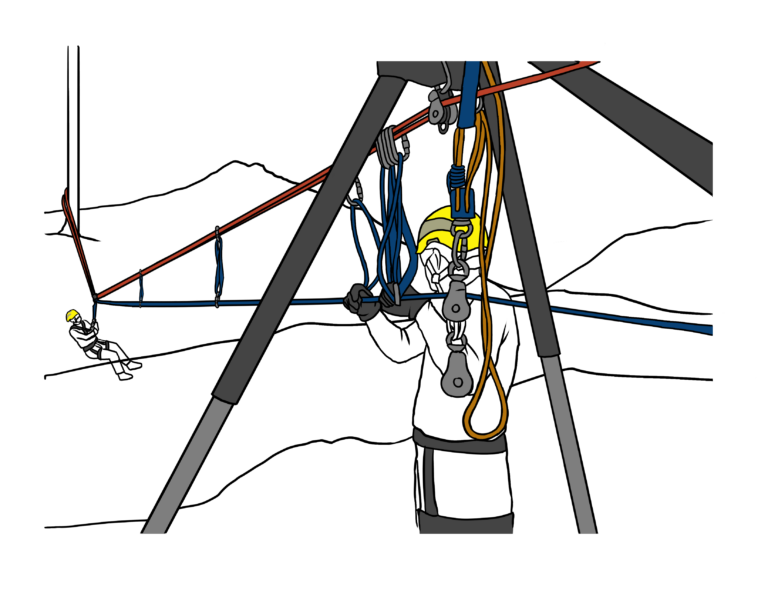Going back 30 some years, I have seen many things come and go… I would say that for every 1 great thing, 3 mediocre things need to be removed; this would be a great start as there are many; (techniques, mantras, gear, standards and old habits) . I would start by removing the useless gear (first); this would immediately make room for better techniques and better gear. Example here would be the Figure 8 plates and “rappel racks”… these both should be put in the museum and never used again.
Creating alignment and coordination among technical rescue riggers, administration/purchasing teams, trainers/educational teams, and training and gear service providers is crucial for a successful and efficient operation.
Here’s a 3-step approach to achieve this:
Step 1: Establish Open Communication Channels
- Regular Meetings: Organize regular meetings that bring together representatives from all involved parties. This includes technical rescue riggers, administration/purchasing personnel, trainers/educational teams, and training and gear service providers.
- Share Insights: Encourage each group to share their insights, challenges, and perspectives. This helps build mutual understanding and promotes a collaborative environment.
- Discuss Goals: Clearly define common goals and objectives for the entire rescue operation. Align everyone’s efforts toward these goals to ensure a unified approach.
Step 2: Collaborative Decision-Making Process
- Collective Decision-Making: Involve representatives from each group in the decision-making process related to gear purchases, training programs, and operational procedures. This ensures that all perspectives are considered.
- Technical Requirements: Riggers can provide insights into the specific technical requirements for gear and equipment. This information should be communicated to administration/purchasing teams to inform purchasing decisions.
- Training Needs: Trainers/educational teams can identify the skills and knowledge required for effective rescue operations. They can work with gear service providers to ensure the equipment aligns with training goals.
- Vendor Input: Gear service providers can offer recommendations on suitable equipment, maintenance protocols, and training resources. Their expertise can guide decisions that benefit all parties.
Step 3: Continuous Improvement and Feedback Loop
- Regular Feedback: Implement a feedback loop where each group provides input on the effectiveness of gear, training, and operational procedures.
- Adaptation: Use feedback to adapt and improve gear selections, training programs, and operational approaches. This continuous improvement cycle ensures that the operation remains up-to-date and responsive to changing needs.
- Collaborative Solutions: If challenges arise, encourage cross-functional brainstorming sessions to find collaborative solutions. Combining the expertise of all parties often leads to innovative problem-solving.
- Training Integration: Gear service providers can collaborate with trainers to offer specialized training sessions on equipment usage, maintenance, and troubleshooting. This ensures that rescue teams are well-prepared to handle real-world situations.
Involvement of Training and Gear Providers:
- Educational Support: Gear service providers can offer educational resources that explain the technical aspects of the equipment. This helps trainers convey accurate information to rescue teams.
- Hands-on Demonstrations: Conduct joint training sessions where gear service providers demonstrate proper equipment usage and maintenance techniques. This bridges the gap between theoretical training and practical application.
- Maintenance Workshops: Organize workshops on equipment maintenance and inspection. Technical rescue riggers and trainers can collaborate in these sessions to enhance their knowledge and skills.
- Feedback Collection: Gear service providers can gather feedback from rescue teams about the performance and usability of equipment. This information can be shared with administration and trainers for improvement.
By following this approach and involving all relevant stakeholders, technical rescue riggers, administration/purchasing teams, trainers/educational teams, and training and gear service providers can work harmoniously toward a shared goal of safe and effective rescue operations.
We can assist in all of this and more…
Peace on your Days
Lance









